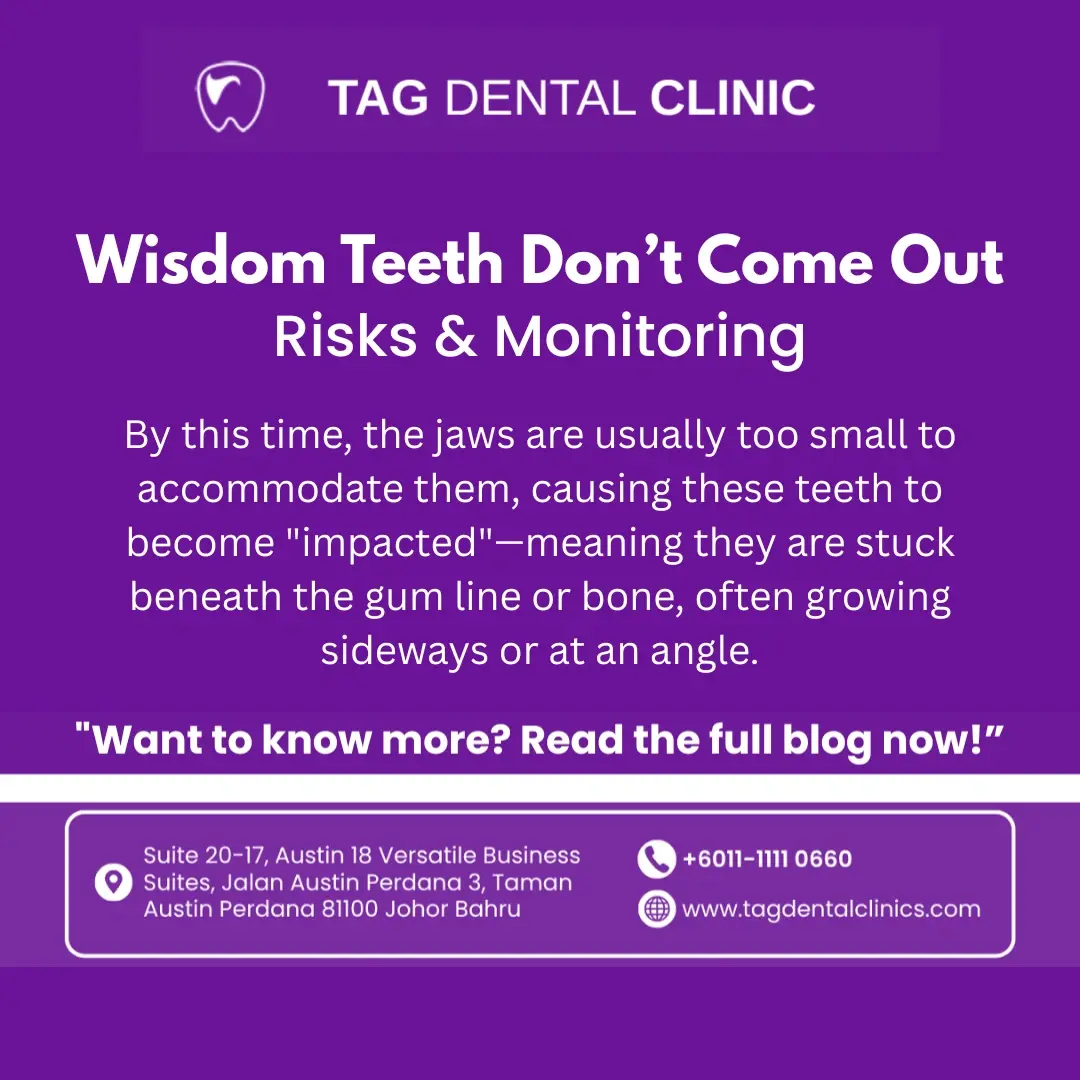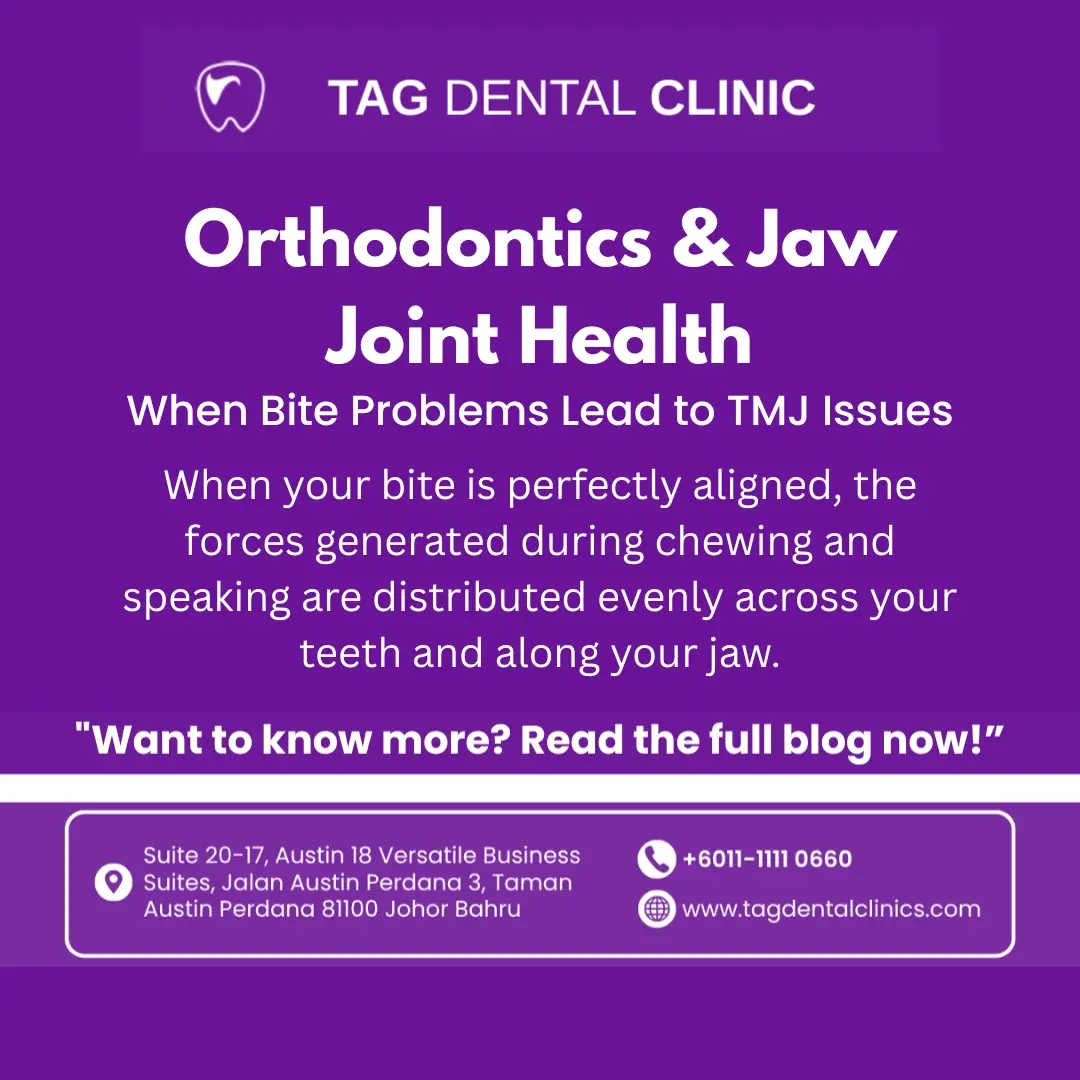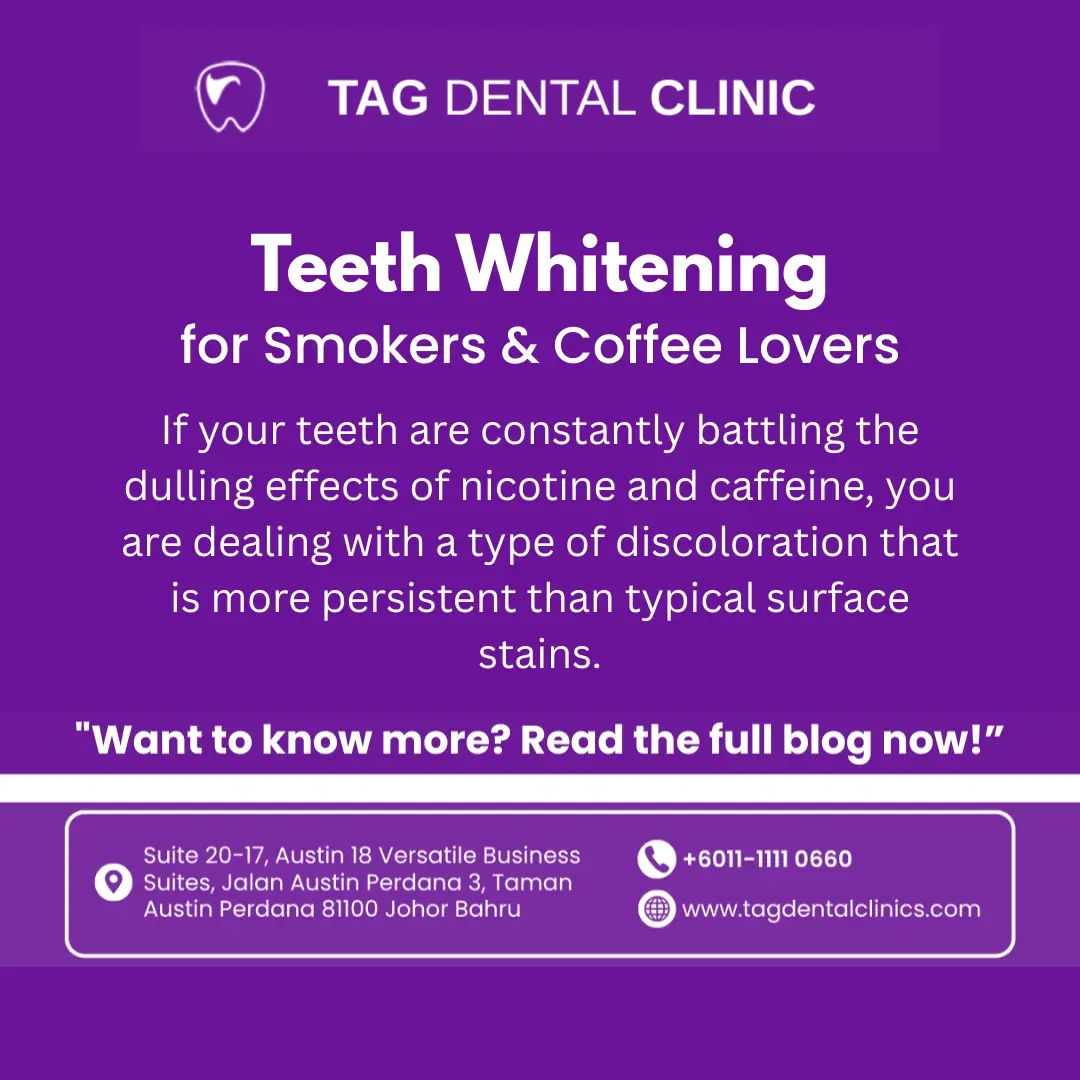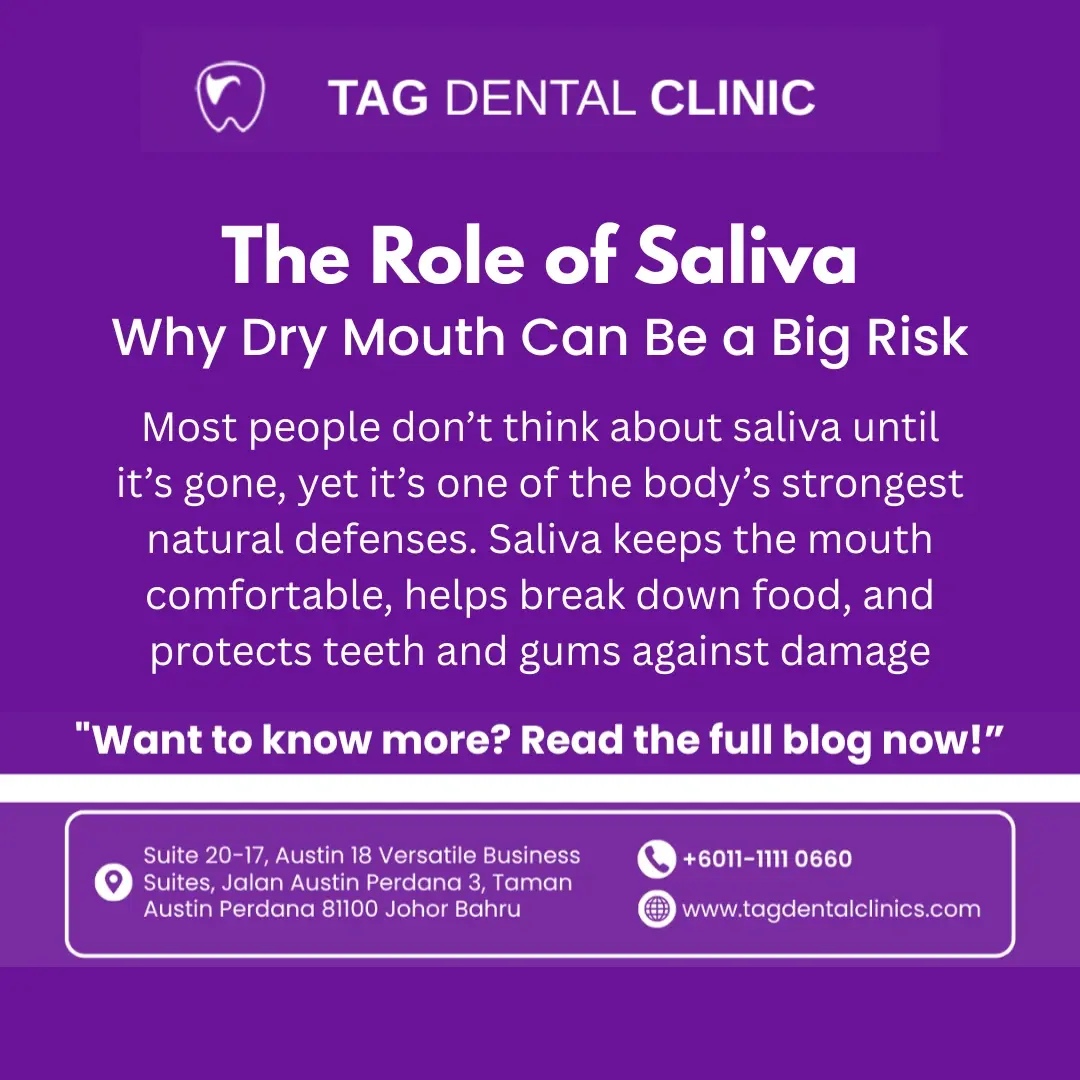When Wisdom Teeth Don’t Come Out: Risks & Monitoring
Table Of Content

The Hidden Threat: Understanding Impacted Wisdom Teeth
Wisdom teeth, or third molars, are the last teeth to erupt, typically between the ages of 17 and 25. By this time, the jaws are usually too small to accommodate them, causing these teeth to become "impacted"—meaning they are stuck beneath the gum line or bone, often growing sideways or at an angle.
An impacted wisdom tooth that causes severe pain or infection is clearly a problem requiring urgent removal. However, many impacted wisdom teeth remain asymptomatic (show no symptoms) for years, posing a complex question: when should we observe versus when should we remove them?
At TAG Dental in Johor Bahru, our oral surgeons and dentists use advanced protocols to accurately monitor these teeth and make informed decisions that prioritize long-term oral health and patient safety.
Asymptomatic Impaction: When to Observe vs. Remove

Modern dentistry emphasizes evidence-based, individualized care. The decision to remove an asymptomatic wisdom tooth is not automatic; it is based on a thorough risk assessment.
When to Observe (Active Monitoring)
Observation is appropriate when:
- The tooth is fully buried and has no communication with the mouth (no risk of decay or infection).
- Imaging shows a low risk of future pathology (cysts, tumors).
- The patient has excellent oral hygiene and attends regular check-ups.
- The patient is over 35 years old, as the risk of future problems tends to slightly decrease, while surgical risk may increase.
When to Remove (Proactive Intervention)
Proactive removal is generally recommended when:
- Partial Eruption: The tooth is partially through the gum line, creating a flap of tissue (operculum) that traps food and bacteria, leading to chronic, low-grade infection (pericoronitis).
- Shifting Risk: The pressure of the impacted tooth is clearly causing adjacent teeth to shift, creating misalignment or crowding that compromises orthodontic results.
- Proximity to Structures: The tooth is positioned near vital structures, but the removal is easier and safer to perform at a younger age (early 20s) before roots are fully formed.
- High Risk of Pathology: Imaging reveals potential bone damage or the early formation of a cyst.
Possible Complications of Unmonitored Impaction

Leaving an impacted wisdom tooth untreated carries several significant risks that often do not manifest until later in life, making surgery more complex and recovery slower.
1. Decay and Periodontal Disease
The most common problem is that the partially erupted or angled wisdom tooth creates an inaccessible cleaning area.
- Cavities: Food debris and bacteria accumulate, leading to severe decay not only in the wisdom tooth itself but, critically, in the adjacent, healthy second molar.
- Bone Loss: Chronic inflammation can lead to periodontal pockets and irreversible bone loss around the healthy second molar, weakening its long-term support.
2. Pathological Changes (Cysts and Tumors)
The sac surrounding the crown of the impacted tooth (dental follicle) has the potential to develop into a fluid-filled sac called an odontogenic cyst or, rarely, a benign tumor. These slow-growing lesions destroy healthy jawbone tissue silently, often requiring more extensive surgery than a simple extraction.
3. Root Resorption and Shifting
The pressure exerted by a wisdom tooth pushing against the root of the second molar can slowly cause the root of the healthy tooth to be dissolved (root resorption). This compromises the stability of the second molar.
4. Chronic Pain and TMJ Issues
While initially asymptomatic, the persistent presence of an impacted tooth can contribute to generalized jaw tenderness, muscle tension, and long-term issues with the temporomandibular joint (TMJ) due to chronic, unequal pressure on the jaw.
Imaging and Decision-Making Protocols at TAG Dental

To ensure the safest and most effective recommendation, our protocols rely on precise diagnostic imaging:
1. Panoramic Radiography (2D X-ray)
This provides a broad overview, showing the position and angulation of all four wisdom teeth, their proximity to the second molars, and the general shape of the roots. This is the standard first step.
2. Consultative Decision-Making
The final decision is a collaborative process between the patient and our oral surgeon. We weigh the patient's age (younger patients generally heal faster), overall health, the specific surgical risks identified by the imaging, and the likelihood of future complications.
Frequently Asked Questions (FAQs) About Wisdom Teeth
%20About%20Wisdom%20Teeth.webp)
No. If the wisdom tooth is fully erupted, functional, and cleanable, it can be kept. The decision to remove is based on high risk, not just presence.
2. At what age is it easiest to have wisdom teeth removed?Extraction is generally easiest and involves the fastest recovery between the ages of 16 and 22, before the roots are fully formed and the jawbone is less dense.
3. Does removing a wisdom tooth affect my appearance?No. Removing a wisdom tooth does not change the shape of your jaw or face.
4. Does the pressure from impacted wisdom teeth cause front teeth to shift?This is highly debated, but the pressure can contribute to crowding or relapse after orthodontic treatment. If shifting is occurring, removal is often advised.
5. How often should an asymptomatic impacted wisdom tooth be monitored?If a wisdom tooth is chosen for monitoring, the patient should visit TAG Dental for a check-up and clinical review every 6 to 12 months, with an updated panoramic X-ray every few years, as deemed necessary by the dentist.
6. What is the biggest risk of waiting to remove an impacted wisdom tooth?The biggest risk is irreversible bone damage or severe decay developing in the adjacent, healthy second molar.
7. Can I keep my job if I have to have my wisdom teeth removed?Recovery usually requires about 3 to 5 days off work or heavy activity. We provide detailed post-operative instructions for a smooth recovery.
8. If I feel no pain, why should I worry about them?Many serious dental problems, including cysts, bone loss, and severe decay of adjacent teeth, develop without pain until the damage is extensive. Pain is a poor indicator of risk.
9. How many times daily should I brush after wisdom tooth surgery?You should brush at least three times daily, being extremely gentle near the surgical site and following all post-operative instructions regarding rinsing and care.
10. What is a "dry socket" and how can I prevent it?A dry socket is when the protective blood clot dislodges from the socket, delaying healing and causing intense pain. Prevention involves strictly avoiding smoking, spitting, and drinking through a straw for the first 48 hours.
Conclusion

The responsible management of impacted wisdom teeth requires expert diagnostic skills and a commitment to preventive care. At TAG Dental Clinic in Johor Bahru, we use the latest evidence-based protocols to ensure your decision—whether to observe or remove—is the right one for your long-term health. If you have impacted wisdom teeth, schedule a consultation with our oral surgery team today to get a precise, risk-based assessment.





